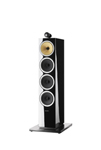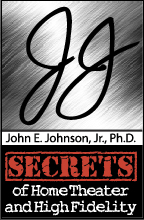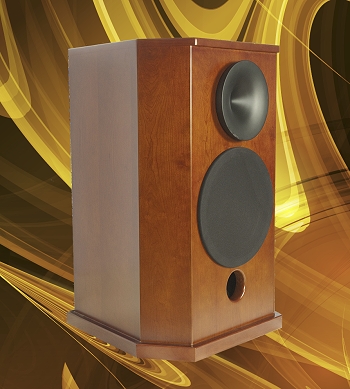
Introduction
Horn speakers have been around nearly a century. They were used in movie theaters when the films became “talkies”, and their advantage is that they are extremely efficient, which is good, because the power amplifiers in the theaters during the 1930’s were very low powered. Linn Audio has built horn speakers for several decades, but most hi-fi enthusiasts may never have heard a horn speaker. They are characterized by wonderful, effortless midrange. The Linn Audio Athenaeum horn speakers are reviewed here.
SPECIFICATIONS
- Design: Two-way, Ported
- Drivers: One 1″ Compression Tweeter, One 15″ Cone Woofer
- MFR: 30 Hz – 20 kHz ± 3 dB (Optional Super Tweeter Extends FR to 40 kHz)
- Sensitivity: 97 dB (110 dB when Bi-amped)
- Recommended Power: 15 Watts Minimum
- Dimensions: 43″ H x 28″ W x 28″ D
- Weight: 225 Pounds/each
- MSRP: $60,000/pair USD
- Linn Audio
- Linn Audio, Speakers, Floorstanding, Horn Speakers, Stereo, Audio
The Design
Horn speakers have compression tweeters and midrange drivers, but conventional woofers. Sometimes all the drivers are arranged in a horn design, which means the driver is at the small end of a megaphone.
A compression driver has a small dome with a voice coil, sitting within a chamber that has permanent magnets on the sides. The dome moves with the musical current, producing compression of the air within the chamber, and this forces air between the magnets out of the chamber into the horn.
The megaphone for a horn speaker does not have two simple straight lines that converge at the driver end and open wide at the output end. There are complicated mathematics involved to design the horn so that it does not sound like the powered megaphones that police use, or the sound that occurs when you cup your hands together to yell something at someone down the street. The result is a design that curves in very specific ways as the horn goes from a small opening where the compression driver is, to the wide opening where the sound emerges. If the curve of the horn is not properly designed, it can have a sound called “shouting” at high volume.
In the photo below, the tweeter with its horn is shown. At the center is the compression driver.
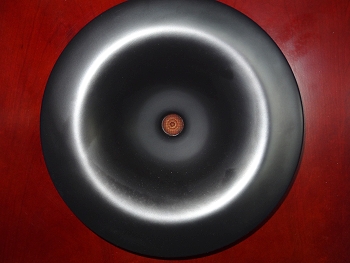
The Athenaeum is very big, and very heavy (225 pounds), with about 2″ of layered MDF as the enclosure. The sides of the enclosure are non-parallel, to reduce standing waves.
The crossover is second ordered, with a crossover frequency of 2 kHz. The compression tweeter is actually sold as a midrange driver, but the frequency response extends to 20 kHz, so David Linn built the speaker with just the two drivers instead of putting an official compression tweeter (available optionally, extending the frequency response to 40 kHz), as this eliminates one additional crossover frequency (there are unavoidable problems when crossing over the sound at any frequency from one driver to the next).
When David brought the speakers over to our lab, he removed the crossover network board to show it to me (see photo below). You can see how simple it is, and simple is good. It can be connected in two different ways. One goes to both the tweeter and woofer, with resistors (total of 16 ohms) between the input and tweeter since it is much more sensitive than the woofer. The other way bypasses the resistors, and is used when bi-amping the speaker. This yields a 13 dB improvement in efficiency of the tweeter, so that amplifiers such as single-ended pure Class A triodes (e.g., using a 300B as the triode) can be used to drive the tweeter, using only about 5 watts.
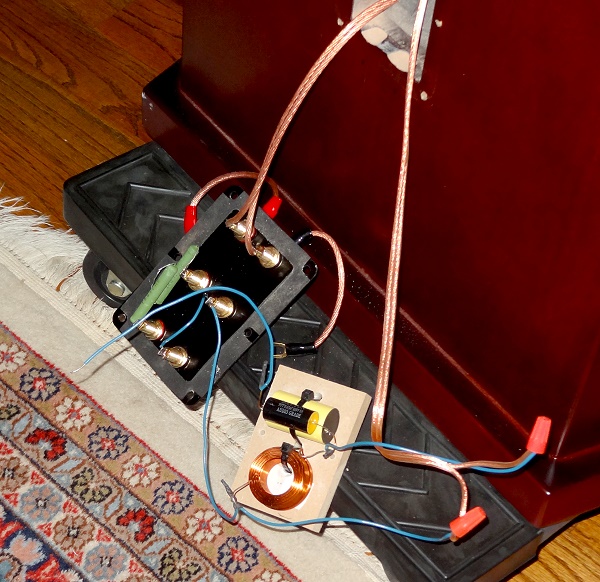
Here is the rear panel with the speaker binding posts. It is wired with the resistors in the tweeter path, and is being driven by one power amplifier. The top set of binding posts go to the tweeter without the resistors in the signal path.
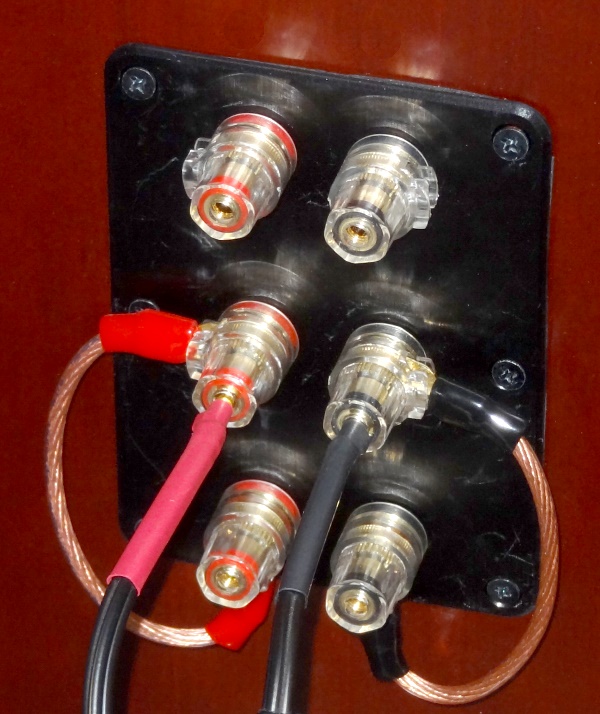
Setup
These speakers are designed for a big room, and fortunately, I have one – my living room.
I placed them about 8 feet apart, slightly toed in. My listening position is about 15 feet at the other end of the room. Behind the speakers is an atrium, so the speakers did not have a reflective surface nearby.
I used the single-amp speaker binding posts, i.e., with the resistors in place, so that the volume of the tweeter and woofer would be the same. (See the last photo on the previous page for the wiring setup.)
In Use
I tested the Linn Athenaeum speakers with an OPPO BDP-105 universal player, Pass Labs XP-20 preamplifier, and BAT VK75 SE power amplifier. Cables were Wireworld.
The first thing I noticed was that I only had to turn the preamp volume control up one notch or two, to get my typical listening volume (medium loud). Again, this kind of sensitivity is one of the advantages of horn speakers.
The album Pure, by Haley Westerna, has several tracks that are a good test for an amplifier or speaker’s presence or lack of higher ordered harmonics. “Benedictus”, in particular, is my favorite from this album. When she hits the high notes, the album’s title spells out the sound on the Athenaeum. Nothing gets in the way of her incredible voice and the listener. It’s one of those albums that soars with Pure Class A amplification (the Pass XP-20 and BAT VK75 SE are Class A biased). The sound had a hint of extra midrange, which is confirmed in the bench tests. Not too much . . . just enough to give a warmth to the sound.

Solo harp is a good test for transient clarity, with the pluck of the strings producing very strong transients. I sensed no fault in the sound at all with the Athenaeum’s. Transients were intense and detailed.

This Telarc SACD (CD-80515-SA) is an excellent performance of Dukas’ La Peri. The opening sequence has a very large brass component which, if there were significant IM distortion, would sound harsh. On the Athenaeum speakers, it sounded like brass – clean, piercing, but not harsh. There was no tendency for the tweeter to “shout” at higher SPLs.
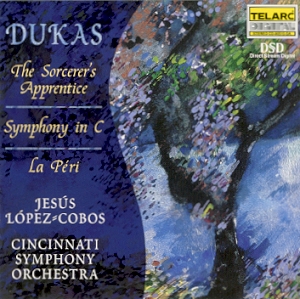
Franz Liszt was the first real “Superstar” of classical composers. Before his arrival in the world of classical music, composers were treated like third class citizens. No respect. Even Bach was treated this way. But Liszt, needing several pianos to play an evening of piano works because the frames in those days were wooden instead of metal, would break them with his dynamic playing. One one evening, he went through five pianos. His music was astonishing, as, apparently, was his love life. Women fainted when he played. Dynamics? He could touch the keys as a feather, or pound them as with a sledge hammer. So, just about any Liszt recording can be used not only to test dynamics, but the timbre that is true to the piano’s sound. All of these characteristics were reproduced with the Athenaeum speakers, and again, with just a few watts. Amazing !
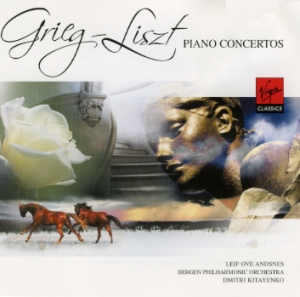
On the Bench
For the distortion measurements, I placed the microphone 1 foot from the center of the respective driver.
At 20 Hz and 90 dB output, THD+N was 8%.

At 50 Hz, distortion plummeted to less than 0.5%.
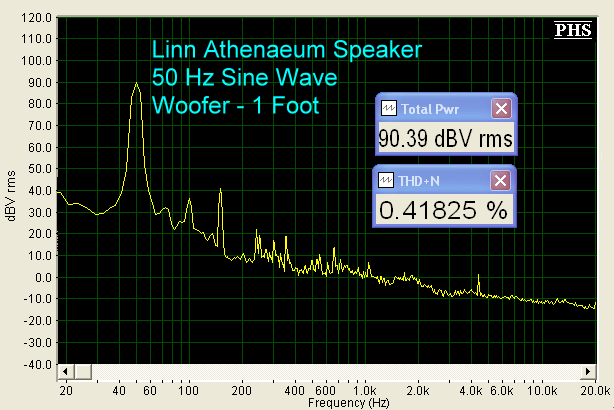
At 1 kHz, distortion was 0.2%, and this was coming from a 15″ driver rather than the usual 5.25″ midrange driver found in most speakers. Not bad at all !
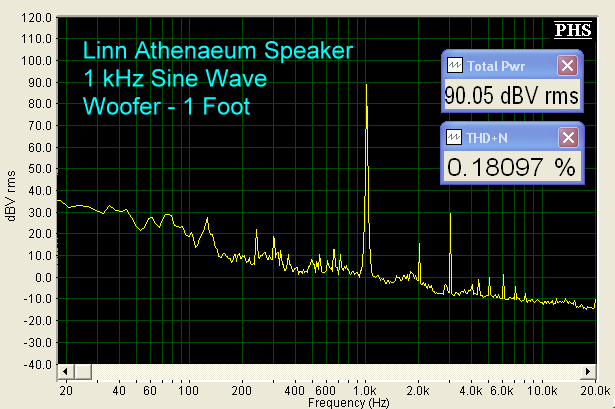
Measured from the tweeter, a 9 kHz signal at 90 dB produced less than 0.5% distortion. Excellent performance!

The room frequency response, measured at a distance of 3 meters, is shown below. The peaks and dips are due to the room, so if we take an average, it appears to be reasonably flat down to about 70 Hz, when it declines. There is a small amount of boost between 700 Hz and 1 kHz, which would make the midrange a bit forward. Like just about every full-range speaker, the Athenaeum would benefit from a dedicated subwoofer to take care of the lowest octave.
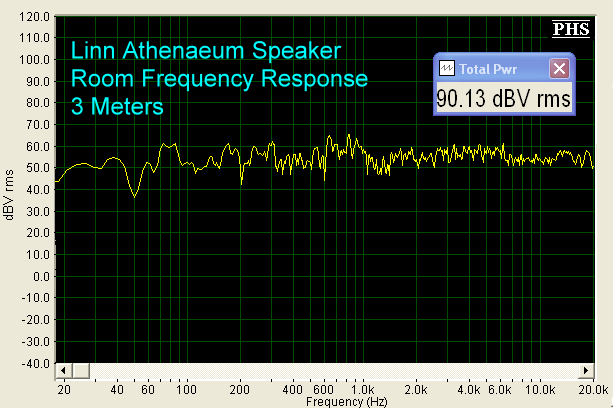
The Athenaeum is a very easy speaker to drive, not only because of its sensitivity, but because it has a nominal impedance of about 10 ohms. However, because these are ultra-high-end speakers – at 60 Large for the pair – I suggest that you upgrade your $799 receiver that you got from Amazon, and go with a pure Class A triode preamp and power amplifier (or integrated), somewhere in the neighborhood of about 30 watts per channel or so.
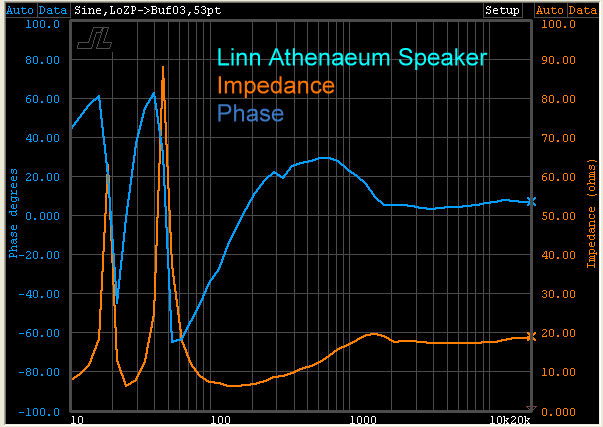
Conclusions
The Linn Audio Anethaenium’s are the first horn speakers I have ever reviewed. The sound is robust and effortless, with a marvelous midrange that sings like angels.
Expensive? Yes. Sounds terrific? Yes. Solid build? Yes. Are there speakers out there that cost several times as much as these? Yes. Wife acceptance factor? Well, I would suggest a grille that covers the entire front baffle. Perhaps baffles for the two front side angled surfaces as well: black with chrome steel (magnetic) posts that extend just beyond the tweeter horn.


